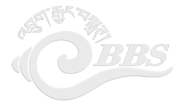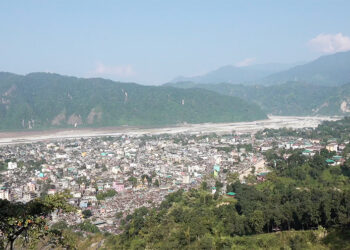 More than three thousand people of Phaling Throm and its adjacent areas in Lhuentse have been drinking muddy water for over two weeks now. Though they have a source for clean water at Tshamegang, they cannot use it at this time of the year.
More than three thousand people of Phaling Throm and its adjacent areas in Lhuentse have been drinking muddy water for over two weeks now. Though they have a source for clean water at Tshamegang, they cannot use it at this time of the year.
 After some residents complained of transmitting diseases from their current water source which is at Ngar, they resorted to using the irrigation water from the Tshamegang water source. Sixteen households use the source for irrigation.
After some residents complained of transmitting diseases from their current water source which is at Ngar, they resorted to using the irrigation water from the Tshamegang water source. Sixteen households use the source for irrigation.
“We used to get clean water before. But we have been continuously receiving muddy water for a week now. And the muddy water is also not reliable. We have been facing a drinking water shortage these days. We have no other source to fetch water. So we are drinking the muddy water only,” said Karma Choden, a restaurateur of Phaling Throm.
“We are drinking muddy water as we have no other water source to fetch water. The water pipe didn’t use to get blocked in the earlier days but due to mud, we have to frequently clean the water pipes. It is not convenient to drink muddy water. So we buy mineral water from the shops for our school-going children,” said Migma Dorji, a resident of Phaling Throm.
Residents of Phaling throm share the Tshamegang water source with the farmers of Jang-Ngarin Gangzur. In 2019, it was agreed that Phaling throm cannot use the source during paddy transplantation.
But the dispute arises when the town residents are forced to divert the water. And this month, some twenty farmers submitted a letter requesting the dzongkhag administration to look into the matter.
“We depend on paddy cultivation for our livelihood. We appealed to the dzongkhag administration as we faced an irrigation water shortage. Prior to distributing our irrigation water as a drinking water source, we haven’t faced any irrigation water shortage. The paddy transplantation, which used to take only two days took almost five days this time,” said Ngawang Samten, a farmer of Jang-Ngar Chiwog.
“The dzongkhag took our irrigation water this time and we could not do our paddy transplantation on time. As our paddy fields are located at a higher altitude, we must finish it by the fourth and fifth months. Since the town area took our water, we finished paddy cultivation only by the mid of the fifth month only. They provided back our irrigation water only after appealing to the dzongkhag administration. It has only been a few days since we finished our paddy transplantation,” said Zangmo, another farmer.
“I think if the dzongkhag administration helps farmers construct an irrigation water canal for the entire paddy season, this problem would be solved. We understand that the current drinking water in the town area is dirty,” said Jigme Thinley, Jang-Ngar Tshogpa.
After a meeting, a team from the dzongkhag administration decided to stick to the agreement. According to the Gangzur Gup, the farmers and the dzongkhag administration had made a verbal agreement a few years ago regarding the use of irrigation water.
“The water coming out from of Tshenmagang area is clean. The Dzongda, Gup and the farmers had a meeting and agreed that the town area won’t disturb the irrigation water during the paddy transplantation. However, it was also decided that the town area will use the irrigation water when not in use,” said Kuenzang Dorji, Gangzur Gup.
“We conducted a meeting in the Dzongda’s office on June 5th. During which we agreed not to disturb the irrigation water until the paddy transplantation is over. However, we decided to distribute the water to the town area once the paddy season is over,” said Sonam Wangdi, Thromde Thuemi.
For now, residents will have to continue using the muddy water until the paddy transplantation season is over.
Sonam Tshering, Lhuentse
Edited by Sonam Pem and Tandin Phuntsho







